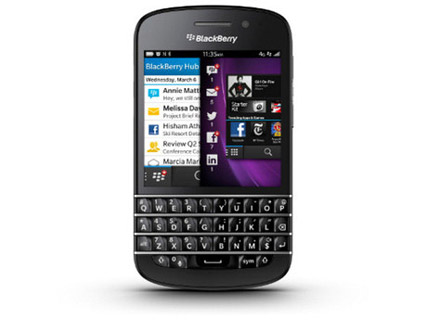
Back in the day, owning a smartphone (pretty much) meant owning a BlackBerry. If you needed to get work done on the go, a BlackBerry was THE phone to get. Being a “CrackBerry addict” was a badge of honor and, if a high school kid had one – he or she was absolutely in the “in” crowd because BBM was the “cool kids” social media tool of choice.
That was then. Today, in a world dominated by touchscreens and (most importantly) apps, having a BlackBerry screams to all the world about your “old school” roots or that the IT department at your job is so antiquated that it is forcing you to use this distant relative of a modern-day device.
Whether you’re on iOS or Android – which, according to StatCounter, combine to make up over 60 percent of the mobile market – you have access to hundreds of thousands of apps. Apps define today’s mobile experience more so than any other feature on your phone. Secondary mobile platforms, like Windows Phone and BlackBerry, simply can’t compete; their app stores are suboptimal when compared to Apple and Google.
But do they need to compete?
Back in January, BlackBerry showed off its newest operating system, alongside its new flagship phone, the Z10 (which recently had its price slashed all the way down to $49.99 after poor sales in its first six months). The Z10 was a smartphone modeled after top-tier phones like iPhone and Galaxy S III, and featured a 4.2” touchscreen. But much like Windows Phone, a lack of app support and lackluster hardware made the Z10 a nonstarter.
Perhaps the last act of a desperate organization, BlackBerry recently launched the Q10, which is a return to the familiar BlackBerry form factor for hardcore BlackBerry fans. The Q10 has a keyboard and a small, but serviceable touch screen.
So – what makes the phone special? Is it worth buying? Should you switch from your iPhone or Android to a Q10? Is it worth an upgrade from older BlackBerry phones?
What Makes it Special?
The Q10 is the BlackBerry that should have come out three years ago. It’s the next generation BlackBerry with a keyboard, and anyone who is a BlackBerry fan is going to want this phone.
The Q10 looks like your traditional Blackberry. It has a 720×720 pixel touchscreen that takes up the top of the device, and a physical keyboard on the bottom. The phone resembles the BlackBerry Bold, the most popular BlackBerry device of a generation long past. There’s no track ball on the Q10 as the touchscreen renders it obsolete.
If you want flawless e-mail and texting with a physical keyboard – and don’t need much more than that out of a smartphone – this is the device for you. I’d forgotten how nice it feels to type on a physical keyboard. I’ve been a glass keyboard user for quite some time, between my new Galaxy S IV and the iPhones I’ve had for the past few years.
What Are the Downsides?
Try as it might, BlackBerry is not an app-driven platform. If you’re an app person, this isn’t the phone for you; you’re going to want to stick to an iPhone or high-end Android device. (But you already know this.)
We live in a world where new phones have to have all kinds of new capabilities. Apps really make the phone. Since Steve Jobs created the App Store and let third-party developers take his platform to the next level, having a bountiful app store is a necessity for a smartphone to succeed.
It is important to understand that the BlackBerry App Store does have apps for the most popular services: Facebook, Twitter, LinkedIn, Sports, News, Weather, etc. It just doesn’t go deep and, to be frank, it never will.
The BlackBerry is not an AppPhone; Androids & iPhones are not BlackBerrys
If you hold up a Galaxy S IV next to the Q10, side-by-side, even a person who’s never used a smartphone before will be able to tell that the devices are very, very different.

There’s no contest. A 720×720 screen – even with a nice, physical keyboard – isn’t enough to make up for the lack of screen real estate that the S IV (or other phones of its size) provides. The Q10 is not a device you will enjoy reading an eBook with, nor will you care for its web browsing experience. That said: in a pinch, it will do.
Should You Upgrade?
The BlackBerry Q10 has one purpose and one purpose only: If you’re a BlackBerry Bold or Curve user, and you want the next-generation BlackBerry, it’s here. The Q10 has 4G LTE, an app store with basic essentials and a decent camera. If you’re sporting a Bold or Curve — or, if you already have an iPad or other tablet and simply need the best possible typing experience available on a handheld device. upgrade to the Q10 now.
If you’re anyone else… $199 with a two-year contract will put you in a much more powerful, much more capable device running Android 4.2.x. Did I forget to mention the iPhone 5? Yep. That is not a device you should be considering right now. It’s already two-year-old technology. If you’re in the market for a smartphone or app phone right now, go with Samsung, Sony, LG or HTC. Apple has a lot of catching up to do.